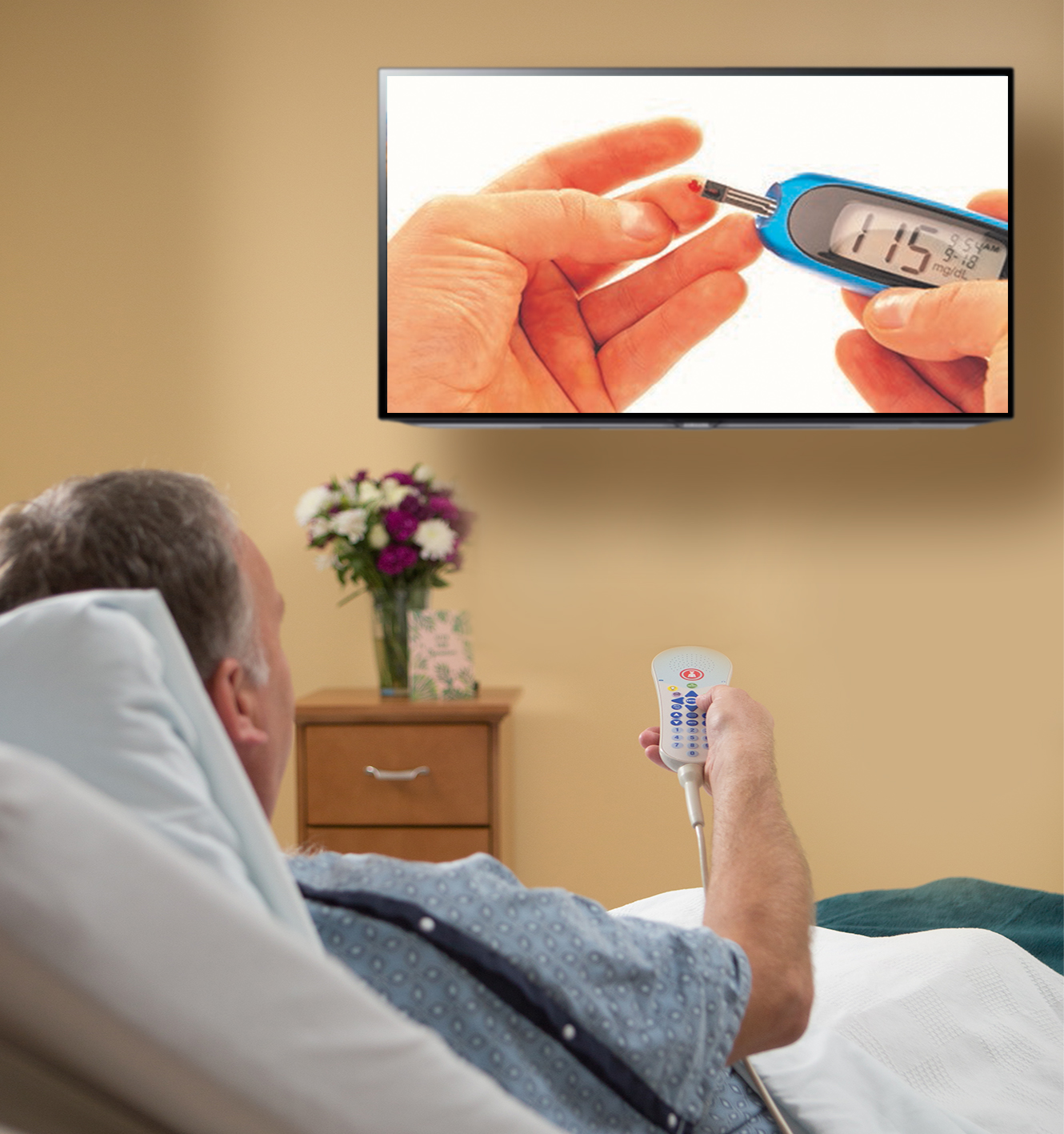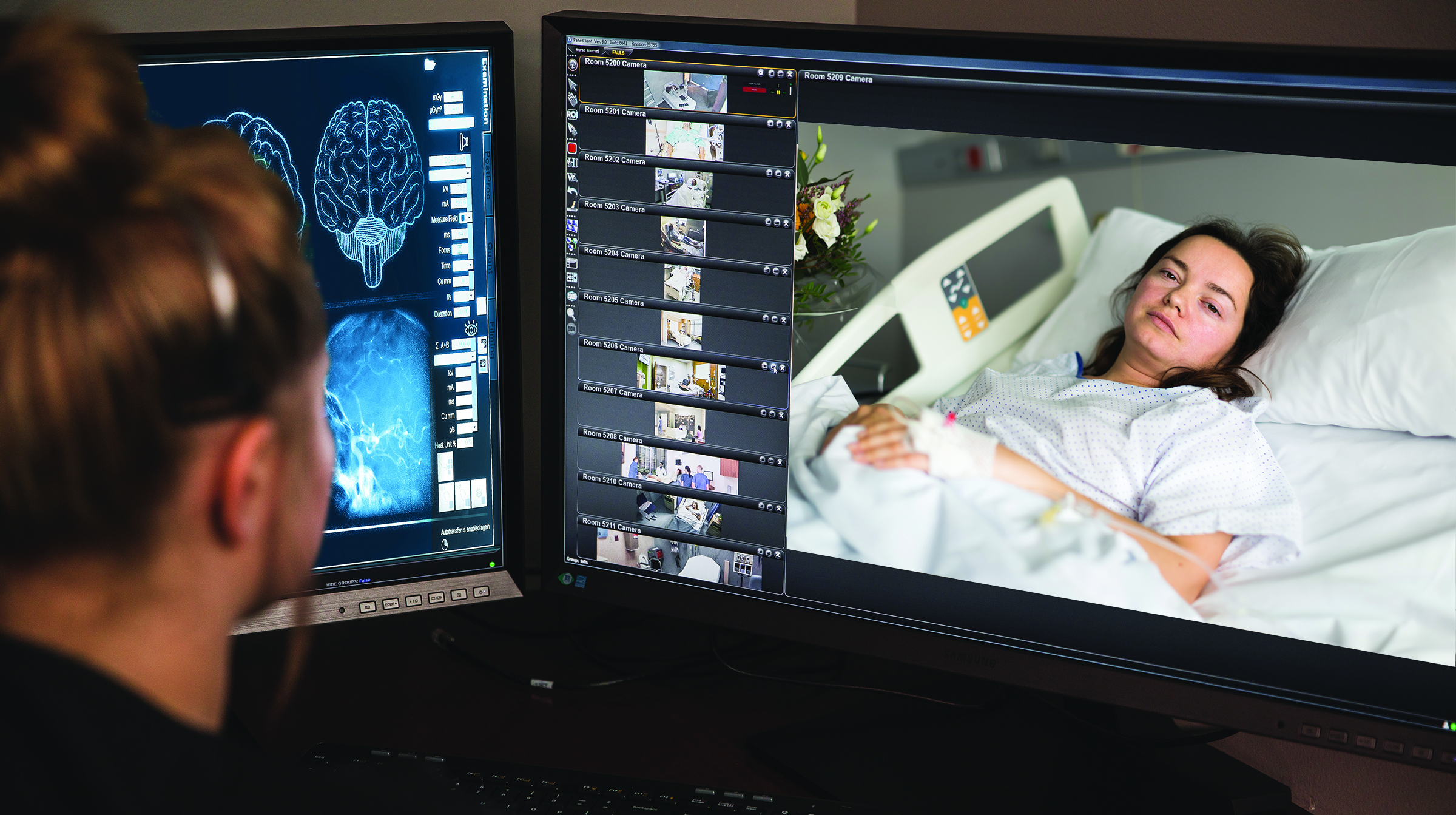Stay Healthy!
Pro AV Assists Healthcare Professionals During COVID-19 Pandemic
With technology incorporated into every aspect of our day-to-day lives, healthcare providers have consistently looked to AV providers for meaningful engagement to improve overall patient health. Many of these solutions afford increased comfort and increased engagement throughout the complex, as well as providing important health information. But with the spread of COVID-19 limiting personal interactions, healthcare providers are looking to quickly increase technology integration—including contactless and remote solutions—so they can continue to provide the same level of services, engagement, and entertainment while keeping employees and patients safe.

Patients often spend hours in their rooms waiting for treatments or results from physicians or nurses. With this being the case, one of the first places many healthcare providers look to engage with patients is through in-room media systems. Keith Donahue, vice president of corporate marketing for Avidex and TeleHealth Services, said, “Hospitals and clinics are incorporating technology and systems to give patients a more home-like experience. A better patient experience includes an interactive, healthcare-grade digital TV experience with entertainment programming, relaxation, and educational content options.”
As the technology continues to evolve, many integrators may look to virtual reality (VR), which is growing in popularity and could be a helpful tool in providing forms of entertainment and relaxation for patients. Also, with patients able to stream content directly through apps like Netflix and Hulu, providers are requesting technology that allows patients to stream content similarly through the in-room media systems.
These systems can also be used to care for patients, even without them knowing it. Donahue feels that patient rooms can serve as a sort of partner in patient care. “When patients turn to television for entertainment and escape, clinical caregivers can passively expose them to health messaging, planting the seeds of awareness and interest. When patients are ready to learn more, a video-on-demand strategy allows hospitals to deliver condition-specific education.” This nearly subliminal messaging allows healthcare providers to continually reinforce vital healthcare information with the goal of decreasing the number of patient readmissions.
These interactive platforms are also being used to automate healthcare staff workflow, including patient requests/information, prescription requests, telenursing, and in-room controls. Donahue explained, “Using an integrated dashboard accessible through workstations or mobile devices, clinical staff can assign condition-specific education, quickly view education plan progress, track engagement metrics, monitor patient communications, and rapidly respond to patient room requests for greater patient satisfaction.” The field is also seeing systems that allow for more patient control of personal room settings including lighting and temperature, meal ordering, and digital whiteboards displaying pertinent care information.

Trevor Fedele, director of sales at MXL Microphones, added that a significant shift he is seeing involves bringing doctors to patients remotely, whether through telemedicine carts or wall-mounted display networks. “We are also seeing many health insurance companies offering telemedicine services for routine physical appointments.” Due to COVID-19, Fedele said they are receiving requests for large numbers of medical carts, with providers forgoing a slower transition phase and opting instead to put these carts to immediate use.
Beyond patient rooms, hospitals are looking to invest in AV systems that are integrated throughout their complexes to offer a better patient, visitor, and staff experience. This advanced technology integration allows for increased engagement within conference and meeting rooms, training rooms, and public areas like waiting rooms, lobbies, and cafeterias. Real-time messaging and wayfinding systems that help visitors navigate facilities are becoming standard features in many hospitals. These messages, which can be dispersed throughout the complex, allow providers to send targeted messaging to specific locations, including waiting rooms, lobby areas, and designated staff areas.
A daily selection of the top stories for AV integrators, resellers and consultants. Sign up below.

Scott McMullan, director of the Medical Innovation Group (MIG) at Diversified, stressed that one of the most important factors in delivering technology solutions for healthcare environments is the human element. “It’s not just AV for healthcare. It’s a screen that delivers real-time information to a surgical team, a digital sign that updates an anxious family in the waiting area, or a kiosk that guides a patient to a critical consultation. Ultimately, implementing these solutions is about identifying trends in patient care and using technology—from the screens in the OR to the cameras and microphones recording procedures and the data collected from them—to improve the quality of care and help reduce patient safety issues.”
With COVID-19 changing the way medical services are provided, virtual consultations and services will see increased uptake due to the focus on limiting physical contact. One of the biggest trends integrators identified related to remote devices. Fedele said, “We have seen companies manufacture thermometers that can be plugged into a computer so the doctor can read a patient’s temperature, as well as small lights and cameras to check a patient’s ears.” With telemedicine becoming more widespread, providers will be looking to incorporate cutting-edge technology that allows patients to connect with medical teams in a reliable and safe manner.

With the fear that COVID-19 patients could quickly overwhelm healthcare providers, TeleHealth Services partnered with Banyan Medical Systems to provide audiovisual telenursing solutions to their client hospitals, helping them to limit direct contact that can spread the disease. Nursing staff members are able to remotely care for patients, including those in isolation rooms, using a networked TV, mounted camera, and pillow speakers to facilitate communications between the patient and the caregiver. The goal is to provide a rapid response, allowing hospitals to deliver needed care while addressing potential nurse shortages and reducing the use of personal protective equipment (PPE) that’s sometimes hard to find.
When it comes time to discharge patients, many medical professionals still rely on printed handouts to explain the patient’s diagnosis and treatment, though this material may be difficult for some patients to understand because of language barriers and limited literacy. Interactive display systems have been found to be a more effective method of educating patients; one study found that using an interactive display can increase overall comprehension and retention by up to 50 percent. Additionally, decreasing the amount of paper used in healthcare centers not only has an environmental benefit, but it is another way to limit additional contact and risk of exposure.
[Shift Offers Free VR Training for COVID-19 Healthcare Workers]
Telemedicine solutions will be fundamental in navigating the future of healthcare in the wake of the COVID-19 crisis. Personal safety will be a concern that stays with us long after the pandemic subsides and some patients may be left wondering if going to the doctor’s office is worth the risk of exposure. Healthcare providers and patients alike will not only welcome the advancement of these technology solutions but may well demand it.
Jennifer is a freelance writer and marketing consultant based in the New York City area. Within the AV industry, Jennifer loves to explore how technology can alter the world around us, creating immersive experiences unlike any other. She has years of experience working with AV integrators, manufacturers, and event production companies in developing engaging content to increase their overall awareness.

